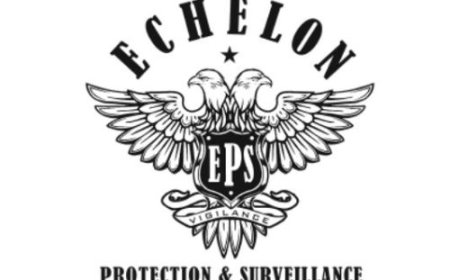How to Build Your Own Custom Stablecoin in 2025?
Learn how to build your own custom stablecoin in 2025 with the right tech stack, compliance measures, and deployment strategy.

Stablecoins have become the backbone of decentralized finance, powering everything from on-chain payments to lending, remittances, and yield farming. As of 2025, the rise of CBDCs, algorithmic innovations, and asset-backed digital currencies has opened new doors for enterprises, governments, and startups to launch their own stablecoins with tailored features.
Creating a custom stablecoin today involves more than simply pegging a token to a fiat value. It requires thoughtful planning, regulatory awareness, smart contract engineering, and alignment with your projects broader ecosystem goals. Whether you're an enterprise exploring on-chain payments or a DAO building decentralized finance products, this guide will walk you through how to build your own custom stablecoin in 2025.
Identify your primary objective and use case for the stablecoin
Before starting development, define the primary purpose your stablecoin will serve. Are you building it for cross-border payments, protocol liquidity, retail settlements, or internal value transfers within an ecosystem?
For instance, an e-commerce platform may need a stablecoin to offer fast, low-fee payments; a DeFi protocol might use it for lending or collateralization. The use case will shape the tokens architecture, collateral model, network selection, and compliance strategy. Aligning the stablecoin's structure with its core function ensures efficiency, adoption, and sustainability.
Choose the right type of stablecoin model
Stablecoins can be broadly categorized into three types:
-
Fiat-collateralized (off-chain reserves)
-
Crypto-collateralized (on-chain assets)
-
Algorithmic (non-collateralized or partially backed)
Fiat-backed coins like USDT or USDC hold USD reserves in banks and issue tokens 1:1. Crypto-collateralized models like DAI lock assets in smart contracts. Algorithmic stablecoins adjust supply based on market conditions to maintain a peg.
In 2025, hybrid models have gained popularity such as real-world asset (RWA) backed stablecoins, CBDC-pegged tokens, or overcollateralized ZK-backed systems. Choosing the model depends on your user base, risk appetite, liquidity access, and regulatory scope.
Select the blockchain network for your stablecoin
Your choice of blockchain impacts transaction fees, security, interoperability, and developer resources. Ethereum remains the most secure and decentralized base, but high gas fees can be limiting. Layer-2 solutions (like Arbitrum, Optimism, Base) offer lower fees and composability with Ethereums ecosystem.
If scalability and low costs are crucial, consider Solana, Avalanche, BNB Chain, or Cosmos SDK. For enterprise-grade applications, Polygon CDK and zk-rollup chains offer compliance-friendly environments. Your stablecoin should ideally be multichain-ready, leveraging bridges or native deployment on multiple chains for greater liquidity and reach.
Determine your collateral and reserve backing strategy
If you're issuing a fiat-backed stablecoin, youll need access to reliable banking partners or custodians to hold the reserves. This typically includes USD, EUR, or other fiat currencies, and may also incorporate gold, bonds, or tokenized real-world assets.
Crypto-collateralized stablecoins use on-chain assets like ETH, wBTC, or LSTs (liquid staking tokens). These are locked in smart contracts, ensuring decentralized backing and real-time transparency.
In 2025, tokenized treasuries and yield-bearing assets like RWAs or staking rewards are often used to enhance the utility and capital efficiency of stablecoin reserves. Your reserve strategy must balance liquidity, transparency, and stability.
Build or fork a robust smart contract framework
To create the stablecoin itself, develop or fork secure smart contracts to mint, burn, and manage supply. Open-source frameworks such as OpenZeppelin, MakerDAO, or Agoric can serve as solid foundations.
For crypto-collateralized models, build vault systems, oracle integrations, and liquidation mechanisms. For fiat-backed coins, your smart contracts should verify off-chain reserve attestations and enable authorized minting.
Integrate role-based access control, upgradeability via proxies, and audit-ready code to ensure long-term maintainability and trust. Your contracts should also include pause functions, circuit breakers, and emergency governance hooks to handle edge cases.
Choose and integrate a reliable price oracle system
Oracles are essential for maintaining your peg. They feed price data from off-chain markets to on-chain smart contracts, enabling the stablecoin system to adjust collateral ratios or supply when needed.
Use decentralized oracle networks like Chainlink, Pyth, Chronicle, or DIA to avoid single points of failure. In algorithmic or crypto-collateralized models, inaccurate pricing can lead to under-collateralization or failed liquidations.
Oracles should be fast, redundant, and tailored to your chosen collateral assets. In 2025, ZK-powered oracles and modular oracles optimized for L2s are common for custom deployments.
Implement minting, redemption, and burn mechanics
The core function of a stablecoin lies in its supply mechanisms. Your users must be able to mint tokens by depositing collateral or fiat, and redeem them on demand.
In a fiat-backed model, minting and burning are usually handled by KYC-approved users or liquidity providers. In a decentralized system, users interact directly with smart contracts. These contracts automatically handle collateral deposit, fee collection, and token issuance.
Ensure the mechanics are smooth, audited, and economically sound. Redemption lags, inefficient gas usage, or overly complex flows can discourage usage.
Integrate KYC/AML procedures if required
If you're launching a fiat-backed or regulated stablecoin, integrating KYC/AML checks is a compliance necessity. Use identity verification solutions like Onfido, Chainalysis, or Veriff to ensure legal eligibility of users minting or redeeming tokens.
Many projects also embed verifiable credentials and ZK-based identity systems to maintain privacy while meeting compliance standards. In 2025, zk-KYC solutions are helping projects meet regulatory requirements without storing sensitive data on-chain.
Include compliance hooks at minting/redemption points or restrict transfers between blacklisted wallets. Your platform's jurisdiction and intended user base will dictate the degree of regulatory rigor required.
Design the tokenomics and utility model
Beyond stability, your stablecoin must offer a reason for users to hold, use, or integrate it. This is where tokenomics comes in. Define how the stablecoin interacts with your ecosystem Is it used for transaction fees, staking, liquidity mining, or governance?
Include features like yield generation, DAO voting, or rewards for early adopters. If you're building within a protocol (e.g., DeFi, gaming, real estate), make your stablecoin the default currency. Its utility ensures natural demand, which helps maintain the peg even during volatility.
Avoid over-engineering incentives that can lead to instability, especially if relying on algorithmic models.
Build a secure and intuitive user interface
Your users will need a simple interface to mint, redeem, transfer, and track the stablecoin. Build a dashboard that connects to wallets like MetaMask, WalletConnect, or Coinbase Wallet.
Display clear information about reserves, supply, collateral ratios, transaction fees, and on-chain data. Offer visualizations for price stability, TVL, and usage metrics. Include educational guides and security warnings to onboard non-technical users.
For institutions or enterprises, offer API access, batch processing, or fiat on-ramp integrations. UX is key to driving stablecoin adoption beyond the crypto-native crowd.
Conduct audits, penetration tests, and economic simulations
Security is critical for any financial asset, especially a stablecoin. Conduct full audits with top-tier firms such as Trail of Bits, CertiK, Quantstamp, or OpenZeppelin. Cover all smart contracts, vaults, oracles, and governance mechanics.
In addition to code audits, run economic simulations (using tools like Gauntlet or Chaos Labs) to test how your system performs under market stress, liquidity crunches, or oracle failures.
Perform penetration tests on both frontend and backend, and establish a bug bounty program to catch any overlooked vulnerabilities before going live.
Plan your governance and upgradeability roadmap
A stablecoin project should not be completely centralized or immutable. Instead, use community-led governance via DAO structures or multisig councils. Empower users, LPs, and ecosystem partners to vote on key decisions like collateral changes, protocol upgrades, or parameter adjustments.
Use tools like Snapshot, Tally, or Zodiac for governance processes. Include clear paths for upgrading contracts (via proxies or diamond standards) without compromising decentralization or security.
Balance between decentralization and emergency response capabilities, especially in the early stages of your stablecoin launch.
Establish partnerships and ecosystem integrations
Adoption is the lifeline of any stablecoin. Reach out to DeFi protocols, DEXs, aggregators, payment apps, and NFT platforms to integrate your stablecoin. The more utility and access points you provide, the more your coin will circulate organically.
Form partnerships with yield protocols, P2E games, launchpads, and fiat on/off-ramp providers. Cross-chain bridge solutions like LayerZero, Axelar, or Wormhole can help you expand to new ecosystems without fragmenting liquidity.
Incentivize early integrations with grants, co-marketing campaigns, and liquidity incentives.
Comply with jurisdictional regulations and licensing
Launching a stablecoin in 2025 requires regulatory diligence. Depending on your jurisdiction, you may need money transmitter licenses, digital asset licenses, or stablecoin-specific registration.
Consult legal advisors to evaluate the requirements in the U.S., EU, UAE, Singapore, or other regions. Understand how new laws like MiCA, U.S. Stablecoin Acts, or Hong Kongs VASP frameworks apply to your model.
Be transparent with audits, reserves, and team structure to build trust. A compliant and transparent stablecoin earns adoption from institutions and Web3 communities alike.
Conduct a phased rollout and testing campaign
Instead of a full-scale launch, test your stablecoin with pilot users or on testnets. Deploy beta versions to devnets or public testnets like Sepolia, Fuji, or Mumbai to identify issues in a risk-free environment.
Start with a small mint cap or whitelist access during mainnet launch. Run liquidity bootstrapping pools, reward early LPs, and gradually expand usage. This phased approach helps refine UX, stabilize the peg, and collect valuable community feedback before mass deployment.
Build a liquidity strategy and market-making model
Your stablecoin needs liquidity to remain stable. Seed initial liquidity on popular DEXs like Uniswap, Curve, or PancakeSwap. Consider incentivizing LPs with native tokens, yield farming programs, or auto-compounding vaults.
For larger deployments, partner with algorithmic market makers (AMMs) or centralized market makers like Wintermute or Amber Group to stabilize order books and manage slippage.
In 2025, liquidity-as-a-service protocols like Tokemak, Bribe, and Maverick are helping stablecoin issuers maintain balanced liquidity across ecosystems without inflating token supply.
Promote your stablecoin with a strong go-to-market strategy
Launch with a clear marketing narrative what differentiates your stablecoin? Is it its composability, compliance, sustainability, or RWA integration? Craft messages for different audiences (DeFi users, enterprises, institutions, developers).
Use Twitter, Farcaster, Discord, Telegram, and crypto media to spread the word. Publish explainer videos, write technical deep dives, and conduct AMAs. Partner with influencers and run airdrops or loyalty campaigns to drive awareness and early adoption.
Leverage transparency as a branding tool. Publish reserve attestations, regular updates, and community calls to establish credibility.
Monitor performance, analytics, and risk in real time
After launch, continuously monitor your stablecoins performance. Use on-chain dashboards to track peg stability, circulating supply, vault health, oracle accuracy, and transaction volume.
Deploy risk-monitoring tools that alert you to rapid redemptions, unusual whale activity, or collateral shortfalls. Offer transparency dashboards to users, investors, and partners to build long-term trust.
Metrics should guide future upgrades, integrations, and capital allocation decisions as your stablecoin scales.
Continuously upgrade based on user feedback and market shifts
The stablecoin ecosystem is evolving fast. Stay ahead by iterating on feedback, launching new features (like yield-bearing versions, cross-chain swaps, or lending integrations), and adopting innovations in privacy, compliance, or zero-knowledge tech.
Listen to your DAO, builders, and power users. Stability is not just about price it's about platform evolution. Your ability to adapt will define your stablecoins place in the next generation of decentralized finance.
Conclusion
Building your own custom stablecoin development in 2025 is no longer reserved for central banks or unicorn startups. With the right mix of planning, technology, compliance, and community, you can launch a stable, trusted, and high-utility digital asset tailored to your projects vision.
Whether you aim to power cross-border payments, DeFi protocols, enterprise finance, or tokenized economies, this blueprint helps you move from concept to reality. By combining robust architecture, smart contracts, secure oracles, and community trust, your stablecoin can become a foundational pillar in the Web3 financial stack.




































